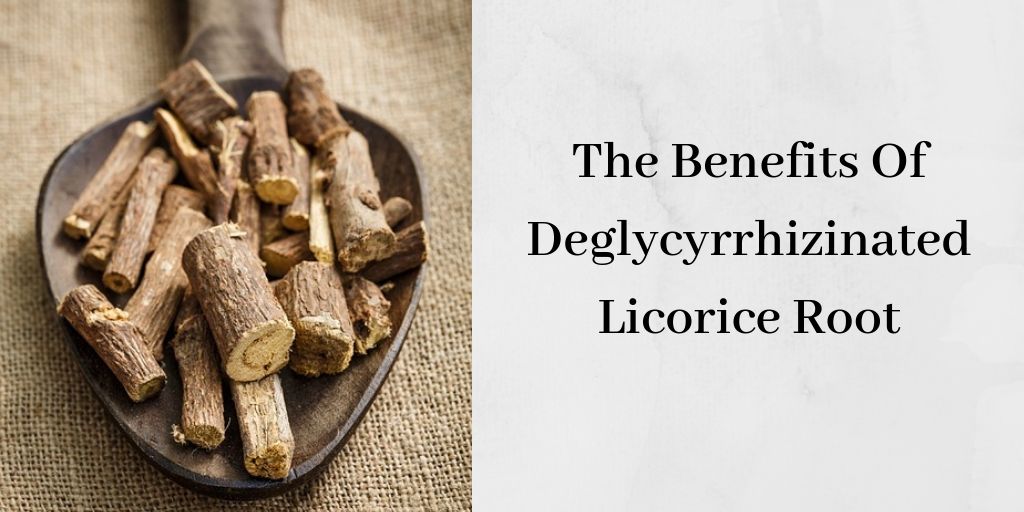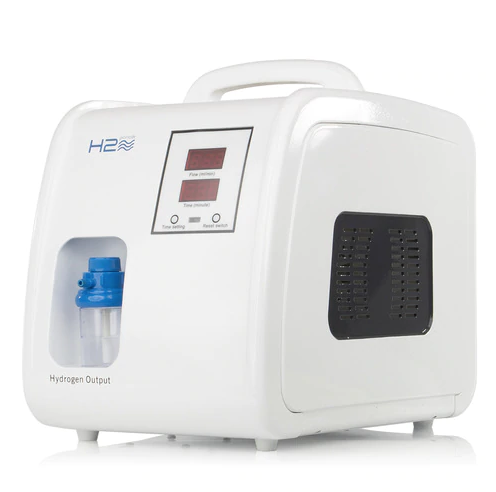DGL, or deglycyrrhizinated licorice root, is one of my favorite supplements. It heals stomach ulcers, promotes healthy digestion, and alleviates GERD, which is so prevalent in today’s society. And it does all this without interfering with cortisol levels. DGL is powerful because it doesn’t just relieve symptoms, it heals the digestive tract. Not many supplements live up to this claim.

Table of Contents
The History Of Deglycyrrhizinated Licorice Root
Originating in the Mediterranean and the Middle East, licorice is a shrub containing anti-inflammatory and immune-boosting properties. It also contains antioxidants and phytoestrogens. The benefits of licorice root have been known for centuries. In fact, it was purported to be found inside the tomb of King Tut.
I wonder what conditions he was trying to treat with this famous root? The Egyptians loved making a sweet drink using licorice, and Greek physicians, before the time of Christ, used it to treat coughs, asthma, and conditions of the respiratory tract. Throughout history, many other benefits of this perennial plant have been discovered.
Affiliate Links
How DGL Differs From Traditional Licorice Root
Glycyrrihizinated licorice root is an adaptogen that has been used by many cultures for a myriad of conditions including fatigue, respiratory issues, and hormonal imbalances. It’s beneficial for adrenal dysfunction as it extends the half-life of cortisol. Licorice root also contains plant-based estrogens so it naturally alleviates the symptoms of PMS and menopause.
DGL, on the other hand, is a derivative of licorice root, with the active component, glycyrrhizin, removed. This product works well for those who are looking to heal their digestive tracts without the counter indications of licorice root, such as high blood pressure, bloating, sodium retention, potassium depletion, and issues with cortisol.
How DGL Heals
DGL is used to heal the gastrointestinal tract. It does this by producing compounds that line the GI tract, preventing ulcers, and fostering long-term healing of inflammatory conditions. It also prevents any type of ulcers to form. This includes ulcers of the mouth, peptic ulcers, intestinal ulcers, and ulcerative colitis. DGL acts like a natural antacid to provide welcome relief from GERD and heartburn. It also enhances circulation in the digestive tract.
This therapeutic supplement heals by increasing the number of mucus-secreting cells in the GI tract. This extra mucus acts as a barrier to protect the esophagus from the damaging effects of stomach acid. It also repairs inflamed tissues. Unlike popular antacids on the market today, DGL does not inhibit stomach acid, which only worsens acid reflux, and similar conditions, by decreasing digestive capacity.
- GERD
- Peptic ulcers
- Inflamed stomach and esophagus
- Acid reflux
- Hiatal hernia
- Mouth ulcers
- Ulcerative colitis
- Intestinal ulcers
- Canker sores
- Gastritis and indigestion
- Sore throat
- IBS
How To Take Deglycyrrhizinated Licorice Root
I like DGL in powdered form or chewable lozenges. You can also drink it as a tea. I carry the chewables in my purse, and take one or two before each meal.
It’s like having a before-dinner treat, and it comes in different flavors like chocolate and ginger. DGL is a convenient digestive aid, and is great to have on hand when traveling. DGL must be activated with amylase, an enzyme in saliva, to be effective.
Chew the lozenges thoroughly to release the healing power of DGL. Take one or two before each meal, or between meals to treat GI disturbances. If you opt for the powder, take 1/2 teaspoon, preferably between, meals. If you forget – take it with your meal, and even after the meal, if that’s when you remember.
If you suffer from mouth ulcers, make the powder into a paste, and swish it in your mouth for a couple of minutes before spitting. DGL is safe for children to use, just give them half the dose.
DGL May Kill H. Pylori
Helicobacter Pylori is a bacterial infection found in the digestive tract. It attacks the lining of the stomach, destroys tissue, causes inflammation, and is implicated in disorders of the upper GI tract. This spiral-shaped organism is responsible for up to 80% of stomach and duodenal ulcers, and is a risk factor for stomach cancer.
[Read More: Can An H. Pylori Infection Be A Precursor To Stomach Cancer?]
Studies show that DGL may kill H. Pylori. By positively affecting the mucous membranes in the stomach, a protective barrier is formed against this common bacteria. Antibiotics are typically the primary course of action to treat the infection. Unfortunately, new strains of the bacteria may become antibiotic-resistant. This is where DGL comes in.
Used in conjunction with other remedies, such as mastic gum and probiotics, DGL is an inexpensive therapy that doesn’t come with the harmful side effects of antibiotic use. I also like buying the powder. It’s easy to take and lasts a long time.
Key Points
DGL is a safe, natural, and versatile supplement used medicinally to treat many conditions of the GI tract. It has properties that promote healing of inflamed tissues, and some studies show it to be as effective as prescription medications like Zantac and Tagamet.
Pharmaceuticals deplete vitamins and minerals and inhibit digestion. By increasing mucus production, DGL has the ability to, not only provide symptomatic relief, but to heal.
Have you used DGL? Let me know in the comments:)




This is a timely post for me. I have had GERD for over 20 years and just this week my doctor told me that the medication I have been taking for is bad for my bones, heart, and kidneys. I am thinking “great!!” what am I going to do. I have to get off this medicine but I can’t function without it. I am going to order deglycyrrhizinated licorice root tonight.
Hi Lee,
Sorry to hear about your GERD. I know that can be a miserable condition. Give DGL a try. It’ll not only help your symptoms but is healing to the GI tract. Chew a couple with each meal. I think you’ll be pleasantly surprised. Thanks for reading!